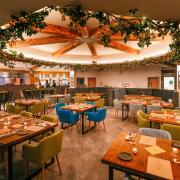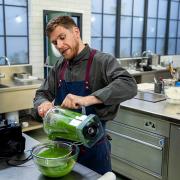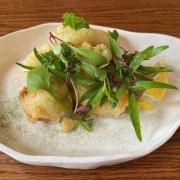Our taste for salad just rockets and that's good news for local producers, writes Roger Borrell
There was a time when small boys glumly prodded lifeless lettuce leaves on their plates, wondering if another dollop of salad cream might end their ordeal more rapidly.
Fast forward several decades and we’re all at it like rabbits. Eating salad, that is. Statistics show we can’t get enough, munching and crunching our way through some �560 million of the stuff each year. It comes in sandwiches, it garnishes our steaks, greengrocers sell bags filled it and supermarkets have it in little plastic bowls for when we want to feel virtuous.
Salad consumption is now at it highest level in the history of eating and the summer months mean demand goes crazy. Which is all good news for the region’s ‘salad bowl’, the West Lancashire coastal plain between Preston and Southport where miles of rich, black soil provide an ideal growing medium.
Our biggest family firm is Bryan’s Salads, based on one of the moss roads running out of Tarleton. Robert Bryan’s family has farmed here for more than 50 years and, overseen by general manager Jon Bragg, the operation is now bigger than ever with 65 acres in production.The fields around the processing plant provide the contents for 100,000 packs a week, representing around 25 tonnes of anything from endive to lollo rosso.
Jon explains that the farm had always produced salad crops but as the varieties increased someone suggested producing bags with a mixture of leaves. That was 16 years ago and they haven’t looked back.
Every day the 45 staff pick, wash and bag salad to wholesalers around the UK. Their customers range from German supermarket giant Aldi to Philpotts, the Rolls Royce of sandwich retailers. Bigger packs go to restaurants and hotels.
‘The emphasis today is on speed and convenience – that’s why bags of washed, ready-to-eat salad have become so popular at home and with chefs,’ says Jon, originally from Appley Bridge. ‘The other major factor has been the big increase in the sandwich trade.’ Healthier eating habits will have also played a part.
In the Tarleton fields, salad seedlings are planted with parade ground precision and these develop into multi-coloured stripes across the fields. The ground here retains water well but that also suits the weeds and Jon’s team use a small vehicle which brushes away these intruders.
Plants mature in summer in about seven weeks and a 12 acre field is harvested in three weeks or so by a hand by workers who earn their money.
Jon, who has clocked up 20 years in farming since turning his back in a career in banking, accepts the bagged salad industry has had its critics but he is passionate about quality and hygiene.
Each week 30 microbiological tests are carried out at Bryan’s and the company is the only UK producer to be chosen to take part in the European Union’s SOPHY project, which is developing software to monitor product safety, quality and shelf-life.
Anything grown outdoors is prone to pests but Jon says pesticides are kept to a minimum and the leaves are washed in water, not chlorine which is outlawed.
‘I think it says something about our commitment that out of the 5.2 million bags of salad produced last year we had just 16 complaints.’That’s the sort of customer satisfaction that would make any quality control manager beam with pride.
Bowled over
Pea shoots from the Fylde coast are the latest trendy salad crop to appear in bags of Bryan’s salads.
They also produce mizuna, an Asian baby leaf also known as Japanese mustard due to its peppery taste. Bryan’s supply vegetables eaten in Lancashire schools.
Salads (or sallets as they were known) were first recorded in the 14th century by Richard II’s cooks. Back then, they also used flowers, onions, fennel, with a dressing of oil, vinegar and salt – it has come full circle.
The word salad is derived from the Latin sal for salt which developed into salata meaning salted things. English cooks in the 17th and 18th centuries used fruit such as oranges and lemons in their salads.


























